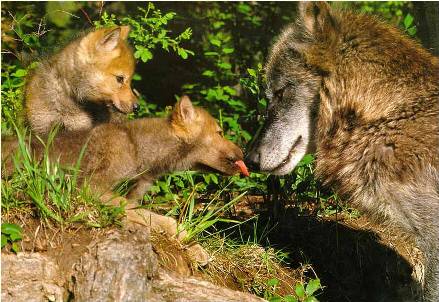01
Sep
Op-Ed: NM’s lobos need our help to survive

SANTA FE, N.M. — A pair of Mexican wolves and their yearling pup chase an elk on a late summer day somewhere out in the Gila Wilderness. The family of wolves is called the Leopold Pack in honor of Aldo Leopold, the naturalist and writer who spent the early years of his career working in and exploring the national forests of New Mexico.
In 1997, just before the first Mexican wolves, or lobos, were released back into their native habitat, I moved from Denver to the foothills outside of Santa Fe. It’s a couple of hundred miles from lobo territory, but it wasn’t long before I was drawn into their story.
Nearly wiped out by humans, Mexican wolves were about to make a comeback in the late ’90s, but it had taken a Herculean effort. When added to the endangered species list in 1976, odds were long that enough wolves existed to save them from extinction. A group of scientists and wildlife officials, headed up by Norma Ames of the New Mexico Department of Game and Fish, convened to write a recovery plan. Given the challenges, the goals set out in that first plan (published in 1982) were modest: first, recover the population in captivity through careful breeding striving to preserve genetic diversity and, second, release wolves back into their historical habitat with a prime objective of 100 wolves in the wild.
New Mexico was one of the original partners on the recovery team, working with the US Fish and Wildlife Service (FWS). The first wolves, released in Arizona, were allowed to range into and establish territory in the Gila National Forest. In 2011, under Governor Susana Martinez, New Mexico opted out of the recovery effort. Since that time, most of our state’s efforts have gone toward thwarting the release of any new wolves.
Almost 20 years have passed since the first lobos were set free. They have proven that they still know how to be wild. They have learned to hunt and have raised pups that have gone on to form new families. At the end of 2016, the recovery team estimated that approximately 113 wolves roam the mountains of Arizona and New Mexico, most of them born and raised in the wild. With few releases from the captive population in recent years, the majority of the wolves are as closely related to one another as siblings.
Our own Leopold Pack is a rare exception. The adult female, born to a wolf raised in captivity, was placed as a tiny pup in the den of a wild pack with their newborns. She grew up on the spruce- and fir-covered mountains of the Gila learning to hunt with an experienced family of lobos. With the birth of her pup, she gives new blood to the wild population.
I could not believe my good fortune when I moved to New Mexico, a place with enough wildness and heart to welcome back the Mexican wolf. Reality turns out to be somewhat different. Over the years, I have attended game commission meetings, lobo rallies and public hearings where the fate of wolves continues to be debated.
Mexican wolves need more help from us to be truly saved from extinction.
FWS has issued a new recovery plan in draft form. Its success depends on New Mexico to allow releases from captivity, both families of wolves and pups fostered into existing wild packs.
Most of us support Mexican wolf recovery and now we have an opportunity to comment on the new recovery plan. We must also continue to let our elected officials know that we want lobos running in our forests.
Aldo Leopold had the vision to see that we needed wild, untouched places. Because of his efforts, the Gila Wilderness, where the Leopold Pack runs, was preserved. Now is the time for us to do our part.
Paula Nixon is a Santa Fe freelance writer.
This Op-Ed was published in the Albuquerque Journal



